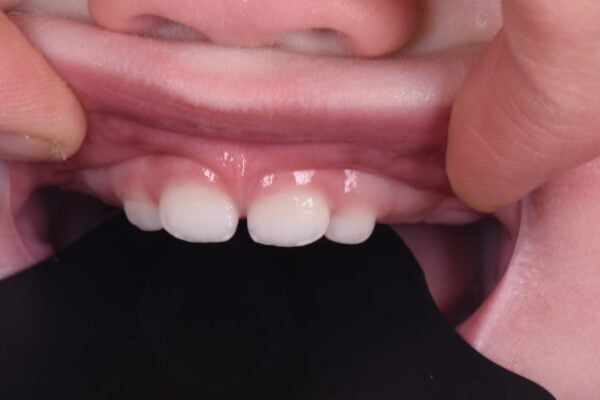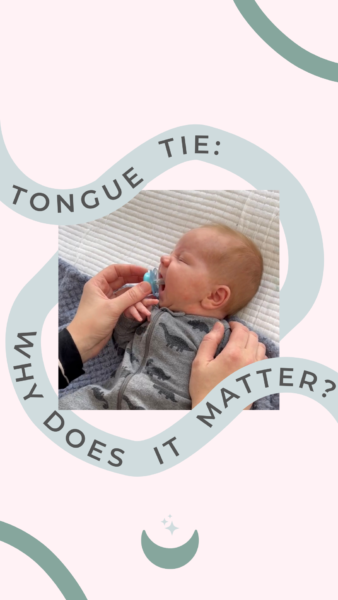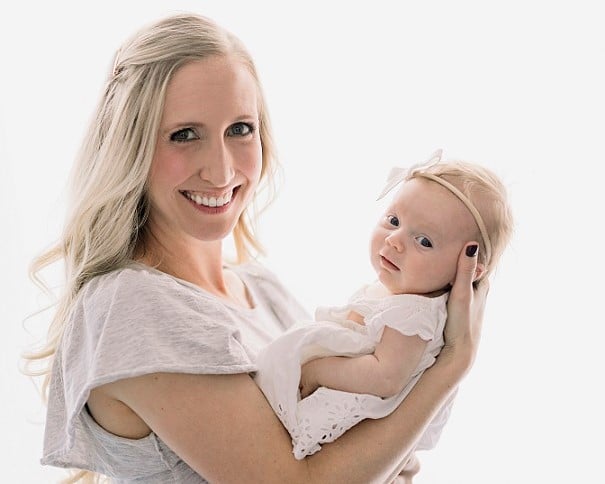As parents, we all know that every aspect of our babies’ health and well-being is important – one area that often goes unnoticed is the presence of a lip tie. Understanding how to spot a lip tie can help you seek appropriate care and ensure your baby is getting good, full feeds and is not uncomfortable during or after them. In this blog post, I’m going to go over the following:
Why Does Proper Latching Matter?
Who Should I Talk to if I Think My Baby Might Have a Lip or Tongue Tie?
Please remember, I am NOT the expert on oral ties. This is just what I know. Ok, now let’s dive right in!

What is a Lip Tie?
A lip tie occurs when the frenulum, the piece of tissue connecting the upper lip to the gum, is too tight or thick. It ends up restricting the movement of baby’s upper lip. A lip tie can impact a baby’s ability to latch properly during breastfeeding, which can lead to a variety of other feeding issues.
Why Does Proper Latching Matter?
Having a good latch is crucial for effective breastfeeding and bottle feeding. When our little ones latch correctly, they can get milk efficiently while also minimizing discomfort for breastfeeding mamas. Here are a few potential issues that can be caused by lip ties:
- Inadequate milk transfer: If baby struggles to get enough milk, they may need more frequent feeds and can even sometimes struggle with weight gain.
- Increased air intake: Having a shallow latch can cause baby to swallow more air, resulting in gas and tummy discomfort, which can in turn negatively impact their sleep.
- Discomfort for mama: Mothers may even experience nipple pain, often described as “lipstick nipple,” and are at higher risk for plugged ducts and mastitis.
How do I Spot a Lip Tie?
If you are trying to identify a lip tie, look for the following signs during feeding:
- Check the frenulum: Every baby has a frenulum, but what matters most is its thickness and tightness. Lift baby’s upper lip to examine the frenulum. If it appears extra thick or restricts the movement of the lip, it could indicate a lip tie.
- Watch their lip movement: Pay attention to your little one’s feeding patterns. If they are frequently fussy, seem unsatisfied after feedings, or notice clicking sounds while they suck, these could be signs of a poor latch as a result of a lip tie.
- Your symptoms (breastfeeding mamas): Watch for symptoms in yourself, such as sore nipples, a flattened appearance of the nipple (lipstick nipple) after nursing, or recurring plugged ducts and mastitis.
Here’s what a more thick and tight frenulum looks like!

What About a Tongue Tie?
In addition to lip ties, tongue ties can also affect your baby’s feeding and comfort. Tongue ties can negatively impact sleep and feeding because they may prevent your baby from getting full feeds and cause gas and reflux. Here are some signs to look out for if you suspect a tongue tie:
- Heart-shaped tongue: Next time your baby cries, take a look at their tongue. The tongue may make a heart shape, pulling in towards the middle and cupping up around the sides.
- Tight frenum” The string that connects the tongue to the bottom of the mouth may be tight or thick, restricting the tongue’s movement and preventing it from extending far or high.
- Clicking sounds while feeding: A tongue tie can prevent the tongue from scooping up the nipple of the breast or bottle, leading to an improper latch. This can also cause gassiness in your little one as well as issues with clogged ducts for breastfeeding mothers.
Click here to check out signs your baby might have a tongue or lip tie on Instagram!
Who Should I Talk to if I Think My Baby Might Have a Lip or Tongue Tie?
If you suspect your baby has a lip or tongue tie, please consult with a healthcare professional trained in oral ties! This can include pediatricians, lactation consultants, or pediatric dentists. Getting more than one opinion can be beneficial, since there may be a variety of treatment options to consider.
Professionals can perform a thorough assessment and guide you on the best course of action. Treatment options may include:
- Observation: In some cases, monitoring the tie without immediate intervention can be appropriate, especially if feeding is going well.
- Lactation support: Working with a lactation consultant to improve latching techniques and manage any feeding difficulties.
- Surgical intervention: For severe cases, a minor surgical procedure called a frenectomy may be recommended to release the tight frenulum.

Recap of How to Spot a Lip Tie in Your Baby
Spotting a lip or tongue tie early and seeking appropriate care can make a world of difference. By understanding the signs and knowing when to seek professional help, you can ensure your baby feeds effectively and comfortably.
Remember, I am not the expert here! It is essential to consult with a professional for personalized advice and treatment options. Every baby is unique, and what works for one might not work for another.
If you need support with your baby’s specific sleep needs or have any other questions about navigating baby sleep and a potential tongue or lip tie, we would love to work with you. Hop on a call with one of our AMAZING Certified Pediatric Sleep Consultants!
Whether your little one is a newborn (0-4 Months Content Library), 4-24 months (4-24 Months Content Library), or a toddler (2-5 Years Content Library), we have the resources you need to get your family the sleep you all deserve!




0 Comments